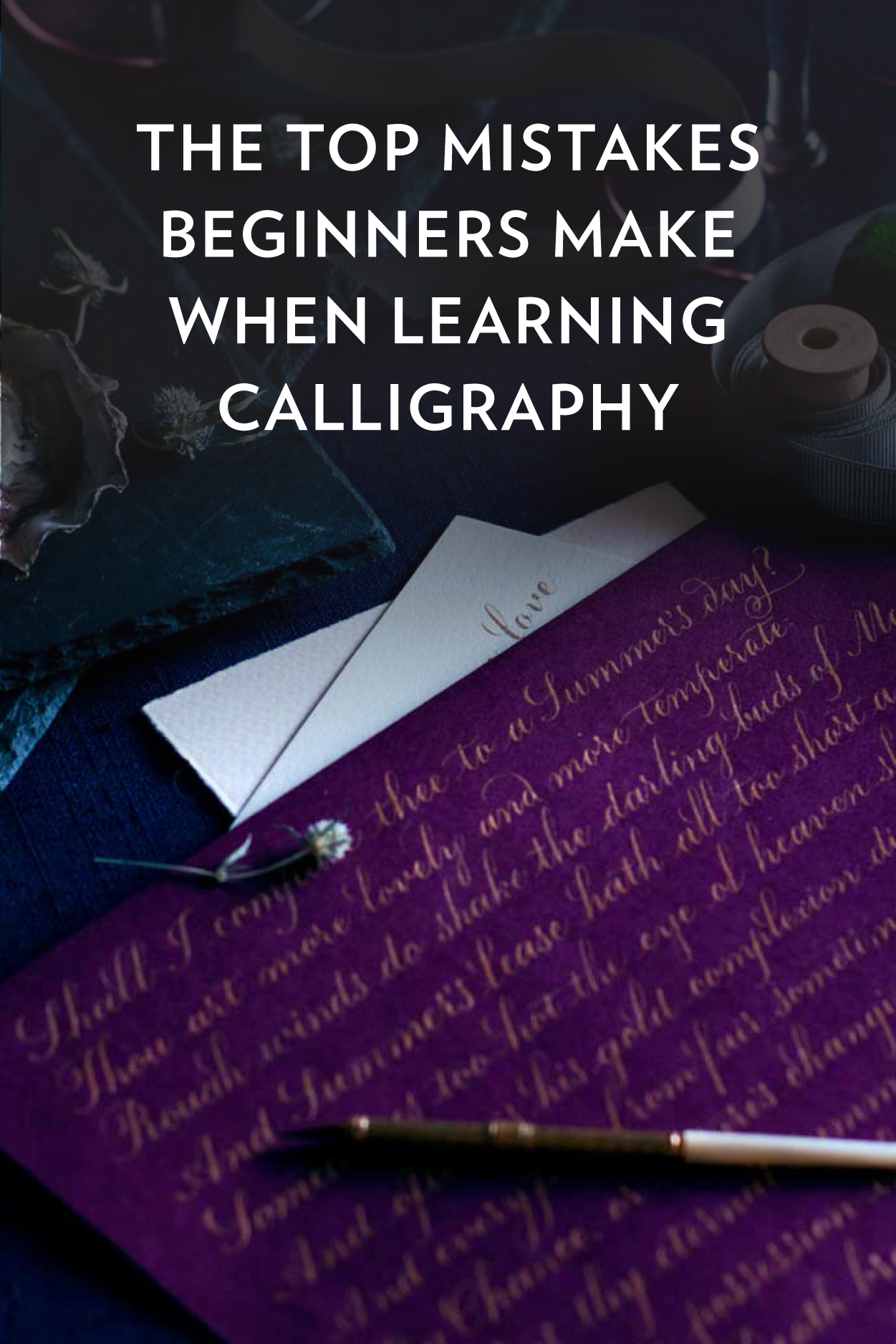The Top 6 Mistakes Beginners Make When Learning Calligraphy
You often hear questions about tips from people just starting out with calligraphy.
What's the best way to practice? How often should I be practicing? What sort of drills are most effective for improvement?
There are so many ways to answer those questions, but I think the most important thing is not just to practice, but to focus on how you are practicing when you do it.
You've heard the phrase “perfect practice makes perfect”, right? From talking to people and reviewing my own habits, these are the things I notice most beginners do that prevent that “perfect practice” from happening.
1) Approaching calligraphy as an extension of handwriting
The way I see it, calligraphy is a discipline. It is an art in the same way learning to play an instrument is an art. The ability to drum out chopsticks on the piano does not make someone a good pianist. It is a creative pursuit that requires patience, dedication, and practice.
Most beginners who approach calligraphy thinking it is simply just “writing with a dip pen and ink” will be disappointed when they find it’s not as easy as it looks to control that nib and the ink that flows off of it!
Begin with the basics and build up your confidence with the tools and you’ll have a much better time.
2) Learning the letters in alphabetical order
There’s nothing wrong with starting with A and ending with Z. But it’s certainly a waste of time and energy!
The letters of the alphabet can be grouped together in many ways—proportion, shape, strokes, etc—which make them easier to grasp and learn. Don’t make it hard for yourself! Learn new hands by studying groups of similar letters at a time. Understand their shapes, and the basic strokes that make up their skeletons. Each script will have forms that are harder to learn than others, so start with the ones that carry the “essence” of the hand and move on to the next group once you’re comfortable with them.
You’ll learn a lot faster and it will help with your consistency from the beginning.
3) Forgetting about spacing
Speaking of consistency, letters are as much about the black of the shape as they are the white of the paper around it. Every line you draw creates a positive shape (the ink) and a negative shape (the space on the paper), and both must be carefully considered as you write.
Do not neglect your spacing!
What’s the best way to do this? By writing full words and sentences (and paragraphs!) when you practice, instead of single letters scattered about on a page.
You need to see how each letter works with another when confronted with how to join them (if you’ve got a script) or how they fit next to each other in words. Once you've got that down, you need to consider how they fit with each other vertically (as in, line spacing).
Keep in mind that when you’ve got a beautiful page of calligraphy all done, you’re more likely to notice large gaps or tight, narrow areas than you are slightly imperfect letters.
Do not neglect your spacing!
4) Not looking at an exemplar during practice
One sure-fire way to hinder your progress is to practice completely off of memory when you’re first getting started with a new calligraphic hand.
Too often beginners will practice one letter at a time, doing an entire page of that single letter trying to get it “just right”. It really isn't conducive to improvement. For one, you’re forgetting about spacing when you’re doing single letters at a time, and secondly, the tendency is to look at the letter you have just written—yeah, the one you decided wasn’t good enough that’s why you’re writing another one—instead of the exemplar.
When you sit down to practice, don’t just get your pen and ink, grab an exemplar of the script you’re about to write. Grab the best one you can find and look at the exemplar before you write each letter. Carefully consider the shape and the proportion before you put ink to paper. This is a much more effective way to practice and make improvements at the beginner level.
5) Finger writing, instead of arm writing
Oh yes, the “death grip” that plagues so many of us is a big reason for this.
When I started getting serious about calligraphy I had to completely overhaul the way I write. I never held a pen “correctly”, and I was one of those people that would press so hard on the paper the next two sheets under it would have indents from my writing. I had to re-teach myself how to hold a calligraphy pen, and I had to loosen up.
To this day I still have to consciously remind myself to use my arm to write; and not my hand, my wrist or my elbow. It’s a lot easier now, but you have to start by taking the first steps to creating the best environment for you to excel in.
Practice at a desk. Not your coffee table. Not on your lap, cross-legged on the grass.
Sit facing squarely, and position your chair high enough so that when your wrist sits on the table, your elbow is at least at a 90 degree angle (ideally more for better movement).
Hold the pen correctly, and practice writing with only your pinky finger lightly touching the page.
You might start out well, but chances are you’ll start to slouch, twist and turn, and you’ll get sloppy. But keep reminding yourself of the proper form and eventually (with practice!) you’ll get better and find the calligraphy will come easier as your “muscle memory” improves.
6) Forgetting that they're letters
Letters are practical objects. Beautiful forms that can be used to create abstract art, but for the most part unless you're creating an artistic piece, your calligraphy will need to be legible, readable and serve a purpose.
Create distinction between letters! Don't neglect the letter forms and allow for ambiguity.
Pay attention to the letters and words you are trying to write. Remember that even if people don't know calligraphy, they know letters (because they see them every day!) and don't take too many liberties that bring you farther away from DNA or essence of each letter.
Don't haphazardly write an ‘n’ that really looks like an ‘h’. Don't get too carried away with your modern calligraphic ‘e’ that it looks more like an ‘l’. Feel free to loosen up and try new things as you develop your own style, but if you're creating a piece that is meant to communicate information, don't go too nuts that people scratch their heads trying to understand—even if it’s just for a split second.
Well there you have it—the top 6 mistakes beginner calligraphers make. I promise that being conscientious of the things listed above will greatly improve your practice.
What do you think? Have I missed any? I'd love to hear your thoughts.

